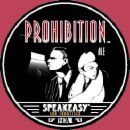Tuesday, November 3, 2009
The Massacre
The Saint Valentine's Day massacre is the name given to the murder of seven people as part of a Prohibition Era conflict between two powerful criminal gangs in Chicago, Illinois, in 1929: the South Side Italian gang led by Al Capone and the North Side Irish gang led by Bugs Moran. Former members of the Egan's Rats gang were also suspected to have played a large role in the St. Valentine's Day massacre, assisting Capone.
AL CAPONE: THE BOSS

Alphonse Gabriel "Al" Capone (January 17, 1899 – January 25, 1947) was an American gangster who led a crime syndicate dedicated to smuggling and bootlegging of liquor and other illegal activities during the Prohibition Era of the 1920s and 1930s.
Born in Brooklyn to Southwestern Italian immigrants Gabriele and Teresina Capone, Capone began his career in Brooklyn before moving to Chicago and becoming the boss of the criminal organization known as the Chicago Outfit – though his business card reportedly described him as a used furniture dealer.[1]
Although he was never successfully convicted of racketeering charges, Capone's criminal career ended in 1931, when he was indicted and convicted by the federal government for income-tax evasion.
Monday, November 2, 2009
Purple Gang
The Purple Gang was a mob of bootleggers and hijackers in the 1920s. Under the leadership of Abe Bernstein, the gang operated out of Detroit, Michigan, in the United States, which was a major port for running cached alcohol products across during Prohibition, since it is on the border with Canada. Perhaps the most ruthless bootleggers of their time, they may have killed over 500 members of rival bootlegging gangs during Detroit's bootleg wars.
Tuesday, October 27, 2009

Elliot Ness
Born April 19, 1903, Chicago — died May 7, 1957, Coudersport, Pa.) U.S. law-enforcement official. He was 26 years old when he was hired as a special agent of the U.S. Department of Justice to head its Chicago Prohibition bureau, with the express purpose of breaking up the bootlegging network of Al Capone. He formed a nine-man team of extremely dedicated and unbribable officers, "the Untouchables"; the evidence they collected helped send Capone to prison for income-tax evasion in 1931. After Prohibition was ended in 1933, Ness headed the alcohol-tax unit of the U.S. Treasury department (1933 – 35); he was later director of public safety in Cleveland (1935 – 41) and director of a division of the Federal Security Agency (1941 – 45).
Speakeasy
A speakeasy was an establishment which illegally sold alcoholic beverages during the period of United States history known as Prohibition (1920–1932, longer in some states). During this time, the sale, manufacture, and transportation (bootlegging) of alcohol was illegal.Speakeasies became more popular and numerous as the Prohibition years progressed, and more of them were operated by people connected to organized crime. Although police and Bureau of Prohibition agents would raid them and arrest the owners and patrons, the business of running speakeasies was so lucrative that they still moved strong in America. In major cities, speakeasies had food, live music, floor shows, and striptease dancers.
Wednesday, October 21, 2009
Subscribe to:
Posts (Atom)
